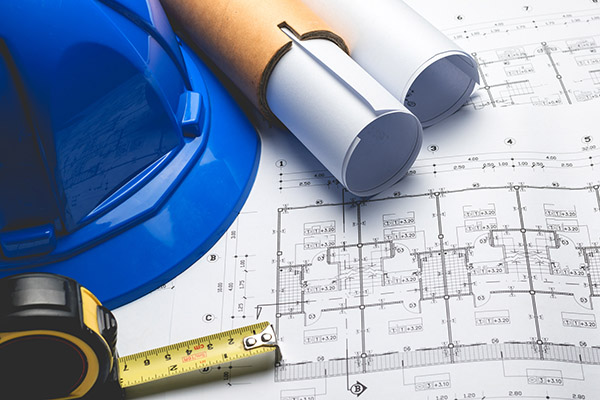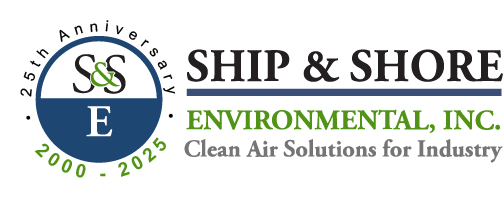3-Can Regenerative Thermal Oxidizer Technical Writeup
At Ship & Shore Environmental, we are dedicated to delivering cutting-edge solutions. As experts in the engineering, design, manufacturing, and aftermarket service of air pollution control systems, we constantly strive to provide valuable technical resources. In this technical writeup, we delve into key aspects of a 3-Can Regenerative Thermal Oxidizer (RTO) to expand your knowledge and help you make informed decisions in managing air quality and emissions control.
The 3-Can RTO design is a testament to our commitment to innovation and efficiency. It is commonly used in Europe and Asia. Here is a closer look at its unique features:
- Input and Purge Philosophy: The heart of the 3 Can RTO design lies in its “input and purge” approach. The third can plays a pivotal role in capturing incoming and leaked Volatile Organic Compounds (VOCs) during valve switching operations.
- Puff Chamber Functionality: The third can also serves as a puff chamber, effectively capturing VOC emissions during the switching process. This feature ensures that even during transitions, your system remains environmentally responsible.
- Leak-Proof Design: With the ability to capture damper valve switch leaks, the 3-Can RTO stands as a leak-proof solution. Your facility can maintain consistent emissions control, making it environmentally compliant.
- Retention Time Optimization: Retention time in the 3-Can RTO is estimated based on the longer chamber distance. This strategic design element guarantees the proper treatment and destruction of VOCs, enhancing overall system performance.
To safeguard your operations and maintain optimal safety measures, the Location of Lower Explosive Limit (LEL) installation within the RTO system is critical. Our approach is simple but precise:
- Response Time-Based Positioning: LEL installation positions should be determined based on the response time of the LEL instrument. This approach enhances the detection and monitoring of potentially hazardous conditions.
Accurate and timely testing is essential for the effectiveness of your pollution control system. The placement of test ports is strategically considered:
- Stack Positioning: Test ports should be located at 3D from the top of the stack or 6D from the bottom of the stack. Here, ‘D’ represents the diameter of the stack. This positioning ensures that your testing is representative of the stack’s emissions.
A smooth and controlled startup of your RTO system is paramount for consistent performance. At Ship & Shore Environmental, we advocate for a specific approach:
- Controlled Start-Up: Quick RTO startup should not be the sole objective. Instead, our RTO start-up philosophy is based on a gradual increase of 7°C (44.6°F) per minute. This measured approach ensures a controlled and reliable system startup, minimizing potential operational issues.
As leaders in environmental engineering and air pollution control systems, we are dedicated to providing you with the most advanced and reliable solutions. Feel free to reach out to our team for more information, consultations, or inquiries about our RTO systems and services.


